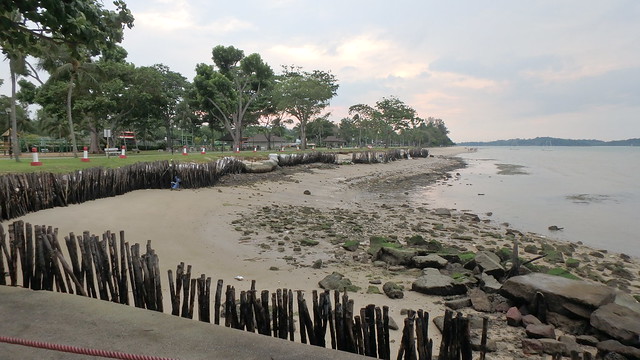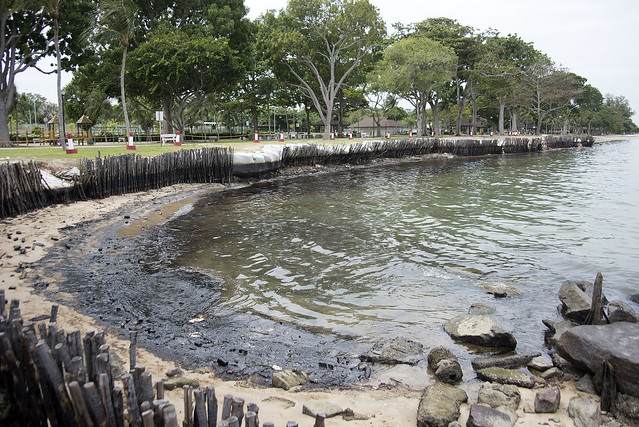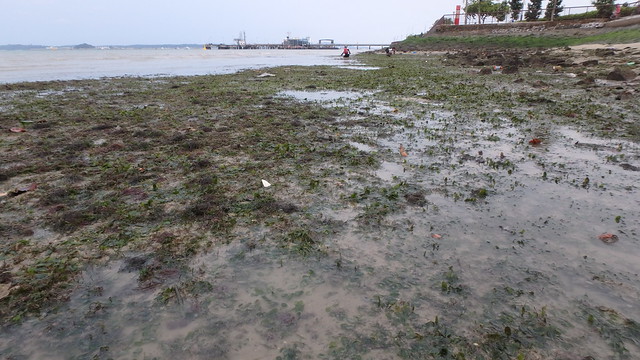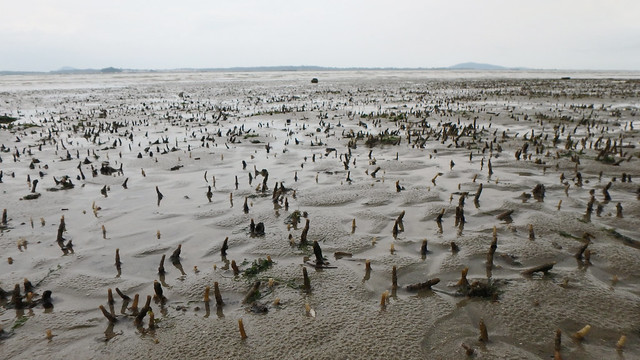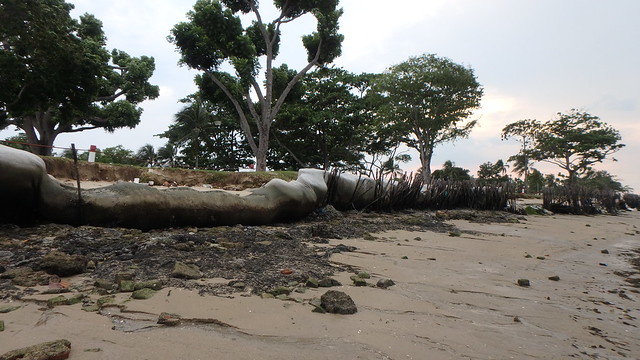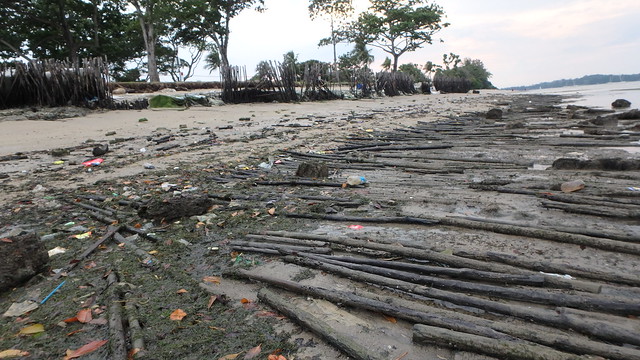This is what I saw the day after the oil spill.
The shore continues to be affected by the failing shore protection system that is now stained with oil. We also surveyed a nearby sandy shore.
Today, there are still dense patches of seagrasses. Mostly Spoon seagrasses. The tide didn't go down as low as predicted, so we didn't get to see much of the shore as we did in May 2017.
Nevertheless, I did manage to see many tiny Ball flowery soft corals. There were also some sea anemones, a some tiny and big Biscuit sea stars. As usual, many sea cucumbers. I only saw one White sea urchin. It did rain before our trip, so perhaps the animals were hiding.
On the sandy shore nearby which I rarely survey, there was only one small patch of Needle seagrass.
There were also small scattered clumps of seaweeds of various kinds.
Mangrove seedlings also wash up on the shore. These include rare mangroves such as Lenggadai, Tumu berau and Tengar.
Animals are not so abundant on the shore. Here were some that I saw.
The most abundant animal here is probably these Straw tubeworms. I also saw a few Solitary tubeworms.
The arrangement of stakes and bags, that seem to be an attempt at shore protection, are still stained by the oil spill. And appears to be really falling apart.
The stakes have uprooted from the high shore and are littered all over the low shore. As the stakes move in the waves, they are probably also killing any seagrass or animals that attempt to settle there. A blog post by Jocelyne Sze on this setup in 2014 showed it was still okay. I observed it falling apart in Apr 2015, again in Aug 2016. Why isn't anything being done to correct this situation?
I saw mangrove seedling on a tideline ABOVE the seawall. This suggests that the sea washed over the seawall at the high spring tide. An early sign of rising seas?
Photos by others on this trip
- Dayna Cheah on facebook
- Loh Kok Sheng on facebook.
- Jianlin Liu on facebook.
- Chris Wong on facebook.

